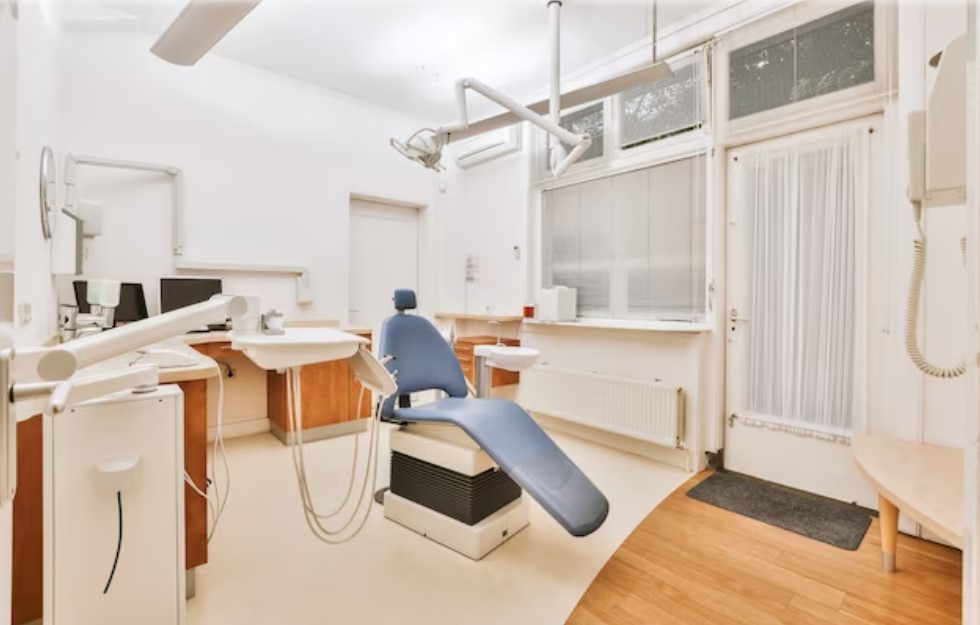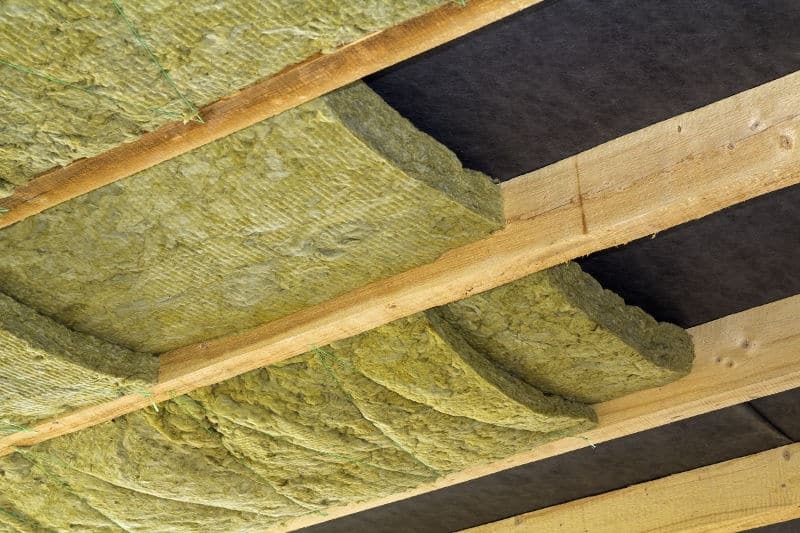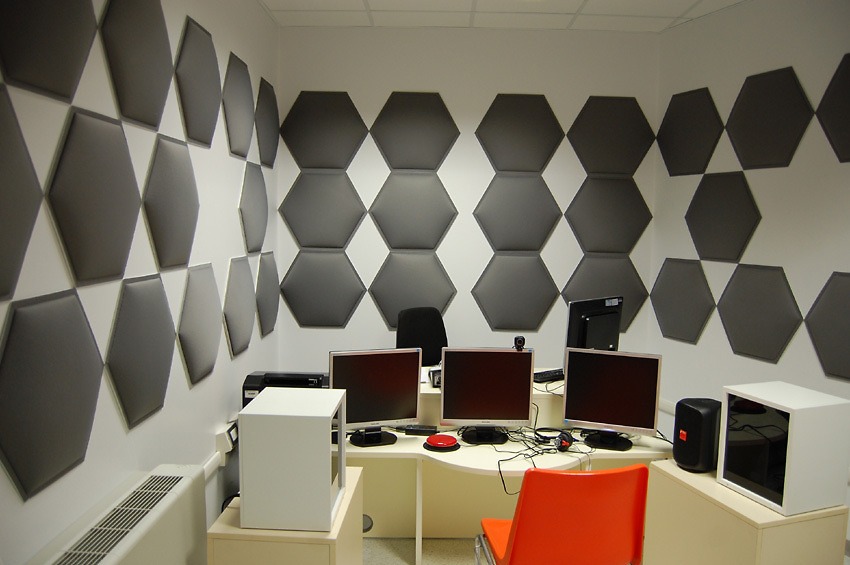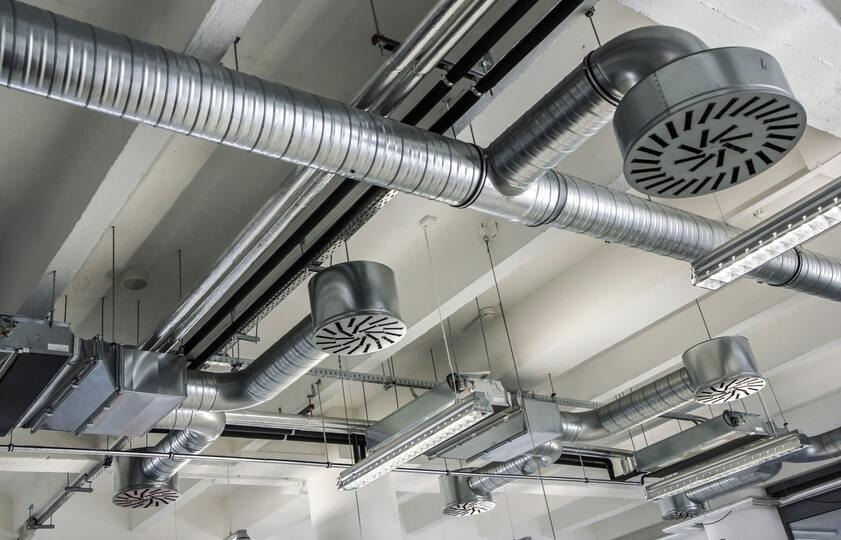Soundproofing Solutions for Dental Practices: Creating a Quiet and Comfortable Space

Soundproofing has become a key aspect of designing and maintaining a dental practice that prioritizes patient comfort and privacy. A quiet atmosphere within a dental office is not just a luxury; it’s a necessity for ensuring patients remain calm and relaxed during their treatments.
Invasive noises can cause anxiety and discomfort for those already apprehensive about dental procedures. The confidentiality of patient conversations is also an important consideration. Dental environments should be sanctuaries where privacy is respected, and sensitive discussions about medical history or treatment plans are shielded from unintended listeners.
Dental offices are often bustling with activity and are prone to different noise sources that can disrupt the serene setting required for an optimal patient experience. The high-pitched whirr of a dental drill, the hum of suction equipment, and the general cacophony of administrative duties can be distressing for patients. Not to mention the potential disturbances emanating from the reception area of a dental office for lease.
To combat these auditory intrusions, soundproofing presents itself as an effective solution. This method minimizes the transmission of sounds, ensuring that each patient’s visit is as tranquil and confidential as possible. This article further examines this topic, considering different soundproofing techniques and materials suited to meet the needs of dental practices.
The Basics of Soundproofing: Material and Design Considerations

Soundproofing your space requires selecting the right materials and using effective design methods to create a calm environment. A variety of soundproofing materials are available, each suited to meet specific acoustic challenges.
These options range from mass-loaded vinyl for robust sound blocking, to acoustic foam and panels that dampen noise, and soundproof insulation such as fiberglass or rockwool that’s important in minimizing sound travel through walls.
The influence of design in soundproofing cannot be ignored; placing sound-absorbing materials in areas with high noise levels, adding floating floors to diminish impact sounds, and installing double-glazed windows to weaken outside noise are key components that cooperate with materials to enhance room acoustics.
Recognizing that top results stem from a balanced mix of materials and design will assist you in making well-informed decisions for a peaceful and quiet living or work area. Whether you’re addressing the din of urban settings or setting up a home cinema, acknowledging the importance of unifying materials and design will steer you towards effective soundproofing practices.
Soundproofing Walls and Ceilings: Effective Strategies and Advice

For creating quieter living and working spaces, soundproofing walls and ceilings has become a popular remedy for both existing structures and new constructions. When it comes to existing buildings, one can adopt tactics such as installing additional layers of drywall with sound-dampening compounds, sealing gaps and cracks to prevent sound leaks, or introducing insulating materials into walls and ceiling cavities.
Including soundproofing in initial plans for new structures is also beneficial. Architects and builders can include dense building materials and intelligent designs, like staggered stud or double-wall construction, to effectively block noise transmission from the beginning. Acoustic panels and sound-absorbing materials also contribute greatly; they can be placed with care to capture and diffuse sound waves, reducing echoes and reverberation within an area. Whether updating an older home or designing a new office building, these soundproofing techniques can result in a noticeable enhancement in acoustic comfort.
Windows and Doors: Insulating Your Space from Noise
When it comes to forging a peaceful and quiet atmosphere within your home, the importance of well-sealed windows and doors is key. Soundproofing contributes not just to tranquility—it can boost concentration, discretion, and overall comfort.
Selecting the right acoustic seals is also important; these are available in several types, such as weatherstripping, acoustic caulk, door sweeps, and soundproofing curtains. Each kind serves different sound-blocking requirements and potential gaps that your windows and doors might exhibit.
For those intent on enhancing the sound isolation of their current abode, examining existing seals is a sensible first measure. Updating deteriorated seals, augmenting window density with films or secondary glazing, and confirming the absence of any unsealed openings can improve their noise-muffling efficacy.
HVAC Systems: Tackling Noise from Machinery

Concerning heating, ventilation, and air conditioning systems, an often-unnoticed issue is the noise they produce. The hums, rumbles, and vibrations of HVAC machinery can be more than an irritation; they can disturb tranquility and comfort within our living and working spaces.
Thankfully, there are multiple approaches to diminish these persistent sounds. For instance, integrating noise-absorbing materials around the equipment and within the ductwork can lessen sound levels. Utilizing mounts and pads engineered to reduce vibrations can also lessen the transfer of these vibrations from the machinery to the building structure.
One of the most effective techniques to control noise is to regularly maintain the HVAC system. Equipment in good repair tends to operate more efficiently and quietly, as potential problems likely to cause increased noise are handled proactively. By adopting these measures to control the sound of HVAC systems, we can enhance the comfort and atmosphere of our indoor spaces.
Decor and Layout: Simple Adjustments for a Quieter Space
When aiming for a quieter workspace, the decor and layout play key roles in dampening unwanted noise. Adding soft furnishings into an office can greatly absorb sound; items such as plush sofas, thick rugs, and heavy drapes not only add comfort but also act as effective sound barriers.
The strategic placement of furniture is key for minimizing noise travel. For instance, bookshelves and partitions can be positioned to block sound pathways, while desks and working areas can be arranged to prevent sound from freely bouncing across the room.
Beyond furniture, wall hangings such as tapestries or acoustic panels are not just aesthetically pleasing but also functional, as they can catch and reduce sound reverberations. Office plants, too, contribute to quieter surroundings by disrupting sound waves, while also enhancing the visual appeal and air quality of the space. Implementing these simple adjustments leads to an improvement in creating a calm and serene office environment.
Soundproofing in dental offices is an important element in creating a conducive environment for patient care. By selecting suitable materials and implementing strategic design choices, dental practices can greatly reduce noise, enhancing patient comfort and maintaining privacy.
This approach to soundproofing not only alleviates patient anxiety but also fosters a professional atmosphere, demonstrating a commitment to patient well-being and confidentiality. Embracing these soundproofing techniques and materials is a key step in progressing dental practice environments to meet the modern standards of patient care and comfort.




